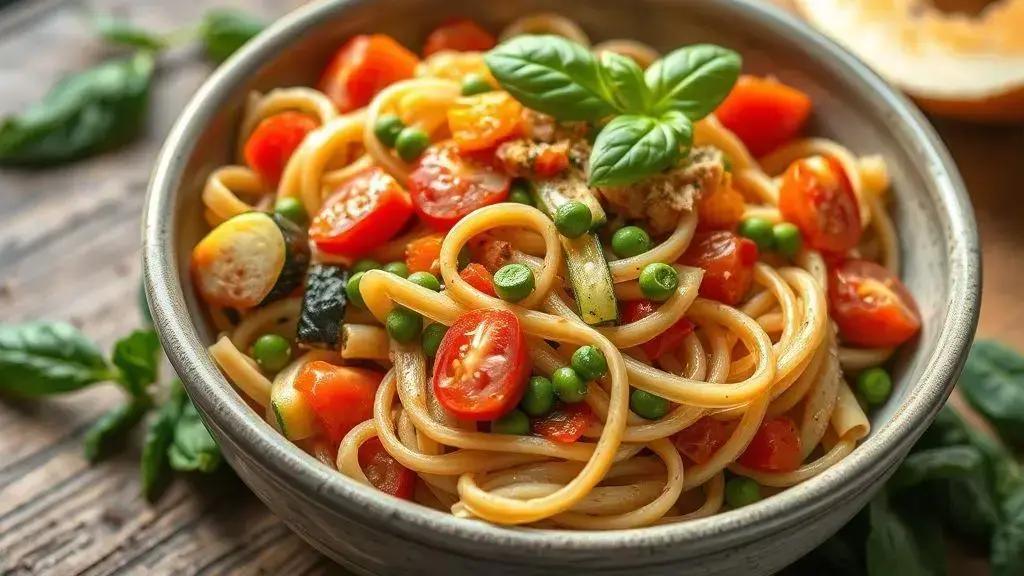Ingredients
Method
- Cook the pasta: Bring a large pot of water to a boil. Add salt and whole wheat penne. Cook until al dente, reserve 1/3 cup of cooking water, then drain and set aside.
- Prepare the vegetables: While the pasta cooks, heat olive oil in a large skillet over medium heat. Sauté the minced garlic for 30 seconds until fragrant, do not let it brown.
- Add vegetables: Add zucchini, bell pepper, carrot, and broccoli to the skillet. Stir-fry for 3-4 minutes until they start to soften.
- Incorporate tomatoes and peas: Add cherry tomatoes and green peas. Cook for another 2-3 minutes, stirring often, until the vegetables are crisp-tender.
- Combine pasta and veggies: Return drained pasta to the pan with the vegetables. Add a splash of reserved cooking water if needed for moisture. Toss gently to combine.
- Final touches: Stir in fresh basil and squeeze over the lemon juice. Season with salt and black pepper to taste. Remove from the heat.
- Serve: Plate the pasta primavera and finish with grated parmesan cheese if desired. Serve immediately for best flavor and texture.
Notes
Pasta primavera is a beloved dish known for its vibrant colors, light flavors, and adaptability—making it a perfect choice for weeknight dinners or casual gatherings. Its combination of pasta with fresh, seasonal vegetables not only makes it delicious, but also wonderfully versatile for just about any dietary preference.
Tips for the best results:
- Cut your vegetables into similar sizes so they cook evenly and maintain a pleasant bite.
- If you want an extra flavor boost, try roasting some of the vegetables before adding them to the pasta—it brings out their natural sweetness and creates an irresistible texture.
- No zucchini? Broccoli stems, asparagus, or snap peas work beautifully, too. Feel free to use any mix of vegetables on hand.
- Save that pasta water! The reserved starchy cooking liquid helps the sauce cling to the pasta, creating a silky finish without all the cream.
- If you’re seeking a richer flavor, a swirl of pesto or sun-dried tomato puree at the end is a game changer.
